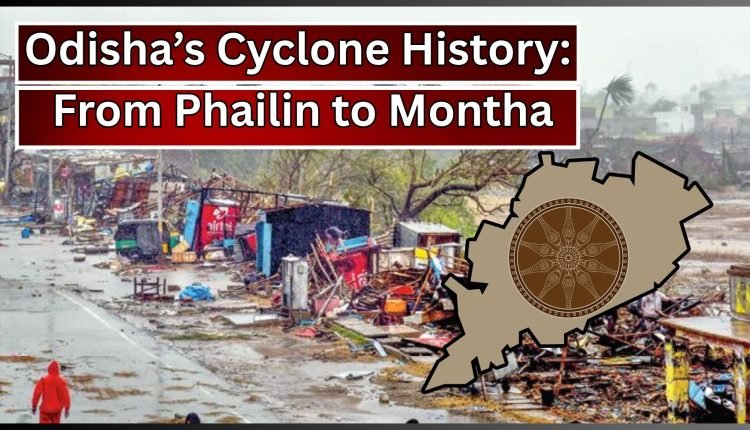Odisha and Cyclones: A History of Unbroken Encounters
Tracking Odisha’s Battle with Cyclones Over the Years and Preparing for the Upcoming Storm ‘Montha
Odisha has long shared an inseparable relationship with cyclones. Unlike ordinary weather disturbances, these storms are so intense that no one can ignore their impact. Meteorologists and climate experts emphasize that the state’s geographical location makes it particularly vulnerable, and historical data shows that cyclones frequently make landfall along Odisha’s coast.
Over the past 11 years alone, Odisha has witnessed 11 major cyclones, demonstrating the persistent threat posed by the Bay of Bengal.
Coastal Vulnerability
Odisha’s coastline stretches across multiple districts, making the state prone to cyclones and storms for most of the year. While these systems often form in the Bay of Bengal, historical trends indicate that the majority of cyclones eventually hit land. West Bengal, Andhra Pradesh, and Odisha are regularly in the path of these destructive storms, keeping residents on alert year-round.
Cyclone Season Isn’t Just October
Traditionally, October has been considered the “birth month” of cyclones. However, Odisha has experienced devastating cyclones in May as well. Some notable examples include:
-
May Cyclones:
-
May 2, 2019 – Cyclone Fani
-
May 20, 2020 – Cyclone Amphan
-
May 26, 2021 – Cyclone Yaas
-
May 7, 2022 – Cyclone Asani
-
-
October and Other Months:
-
October 13, 2013 – Cyclone Phailin
-
October 12, 2014 – Cyclone Hudhud
-
2018 – Cyclone Titli
-
2019 – Cyclone Bulbul
-
September 2021 – Cyclone Gulab
-
December 2021 – Cyclone Jawad
-
October 25, 2024 – Cyclone Dana
-
Experts attribute the increasing frequency and intensity of these cyclones to global warming and changing climate patterns.
Preparing for Cyclone ‘Montha’
The Odisha government has already begun preparations to face the potentially severe Cyclone Montha. Forecasts indicate that the storm may make landfall between Kakinada and Machilipatnam along the Andhra Pradesh coast on the evening of the 28th. Wind speeds are expected to range between 90–100 km/h, potentially reaching a maximum of 110 km/h. Even if the cyclone does not directly hit Odisha, heavy rainfall is expected across the state, according to meteorological assessments.
With lessons learned from past cyclones, the state administration is working proactively to minimize damage and protect lives, continuing Odisha’s long-standing battle against nature’s fury.



Comments are closed.